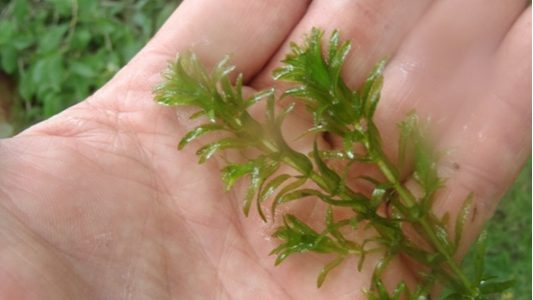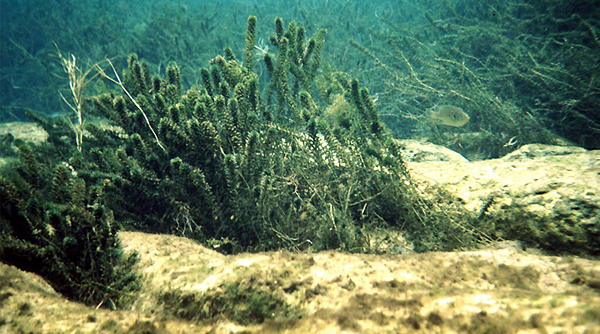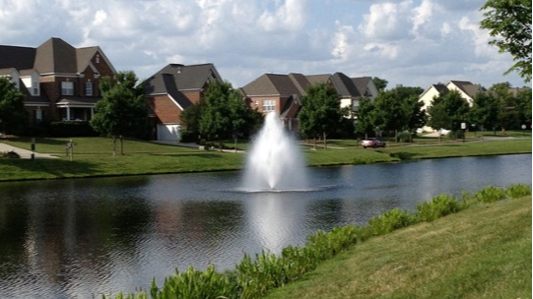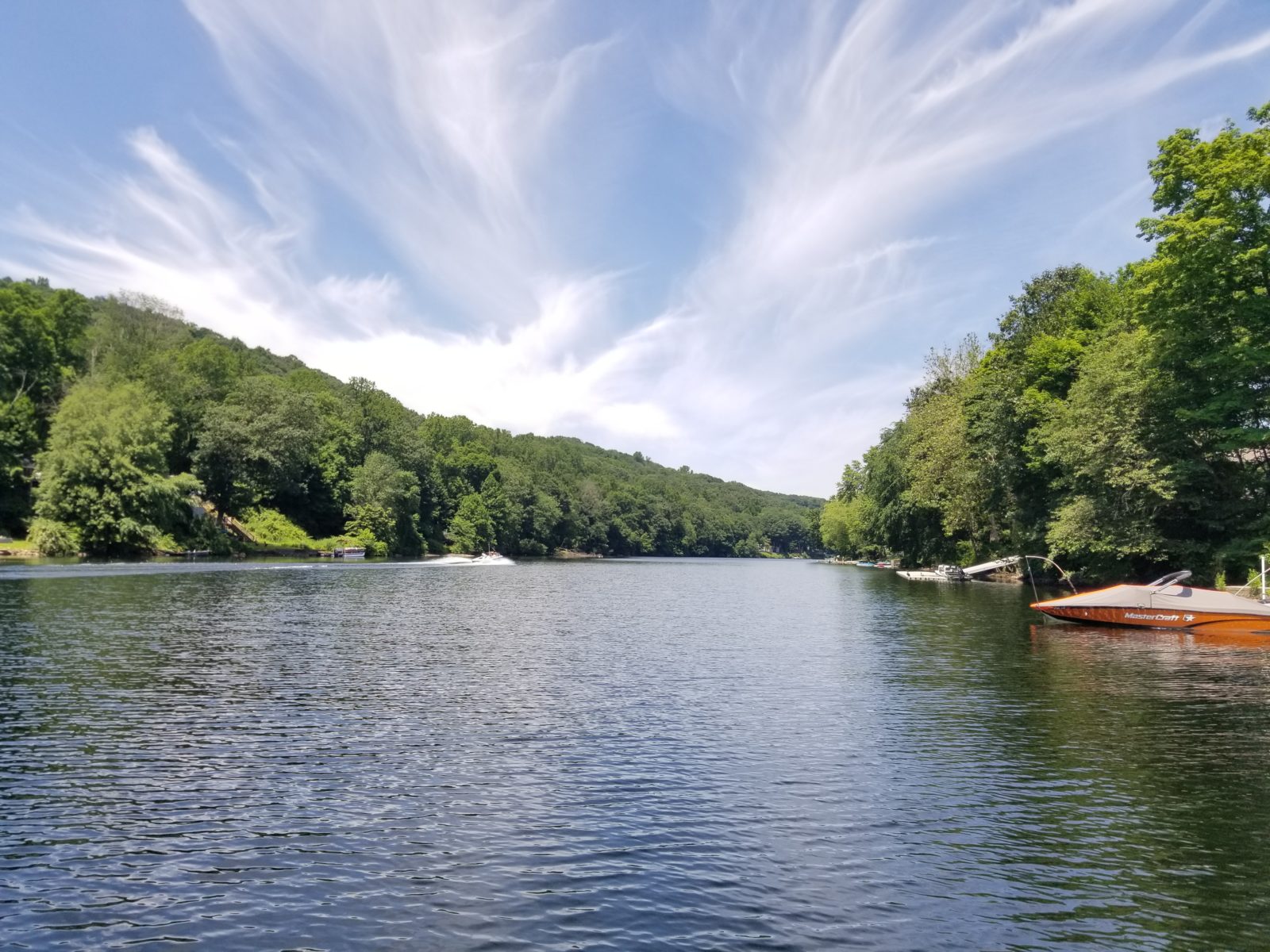Nuisance Algae & Invasive Hydrilla Management in Community Ponds
September 5th, 2019
AS SEEN IN CAI Central Virginia’s Consensus Magazine: Written by Kyle Finerfrock, Environmental Scientist
 Without proactive management in place, the resulting environmental conditions can spur a perfect storm of nuisance aquatic weeds and algae in your lake, stormwater pond or reservoir. Under unhealthy conditions, it is common to find invasive plants like hydrilla, which can compete with and choke out native vegetation. Poor water quality may also lead to the development of various forms of nuisance algae, as well as toxin-producing harmful algal blooms (HABs).
Without proactive management in place, the resulting environmental conditions can spur a perfect storm of nuisance aquatic weeds and algae in your lake, stormwater pond or reservoir. Under unhealthy conditions, it is common to find invasive plants like hydrilla, which can compete with and choke out native vegetation. Poor water quality may also lead to the development of various forms of nuisance algae, as well as toxin-producing harmful algal blooms (HABs).
Before you can implement a sustainable management plan to restore balance and beauty to the waterbody, it’s crucial to properly identify the species ailing your lake or pond. Hydrilla has several distinguishing characteristics. Its small leaves are arranged in whorls of three to eight, and these leaves are heavily serrated and can be seen without the aid of magnification. Reproduction typically occurs through fragmentation, although hydrilla also produces tubers, which are subterranean, potato-like structures. These tubers can stay dormant in the sediment for up to 12 years, causing significant challenges in eradication. Hydrilla forms densemats at the surface of lakes and ponds, which limits recreational use and diminishes the aesthetic appeal of the waterbody. This invasive plant also out-competes native aquatic plant species, reducing biodiversity and negatively impacting water quality.
 If hydrilla is not the culprit, perhaps you are plagued by filamentous algae or macro-algae, which can sometimes be similar in appearance. Patches of filamentous algae are typically long, stringy and slimy. The filaments are made up of cells joined end to end which give the thread-like appearance. These patches are often bright green, but can exhibit browns or yellows – especially if the algae is dying. Small stormwater ponds and large lake shorelines can be overcome with filamentous algae, which can become detrimental to an aquatic system without proper management.
If hydrilla is not the culprit, perhaps you are plagued by filamentous algae or macro-algae, which can sometimes be similar in appearance. Patches of filamentous algae are typically long, stringy and slimy. The filaments are made up of cells joined end to end which give the thread-like appearance. These patches are often bright green, but can exhibit browns or yellows – especially if the algae is dying. Small stormwater ponds and large lake shorelines can be overcome with filamentous algae, which can become detrimental to an aquatic system without proper management.
Macro-algae, on the other hand, are less common in freshwater habitats, but tend to occupy a similar ecological niche. Macro-algae can grow like plants with the appearance of a root-like system and are considered invasive in many regions. In most cases, when a waterbody is suffering from undesirable hydrilla or algae, it’s due to an excess of organic nutrients, which can be confirmed through professional water quality testing. Nutrients like phosphorus and nitrogen enter community lakes and stormwater ponds in many ways – through the natural decomposition of leaves and plant matter, fertilizers, pet waste, and organic sediment that washesinto the waterbody. To reduce nutrient loading, it’s important to establish a beneficial vegetative buffer comprised of native grasses, rushes and lowering plants around your waterbody. The native rooted plants in shoreline buffers can help naturally filter nutrients before they enter a lake or pond. If your pond banks are too eroded to introduce vegetation, a complete restoration using bioengineered shoreline technology may be necessary.
 The positive benefits of a vegetative buffer can also be enhanced by the introduction of a lake or pond aeration system. Aeration systems are available in many forms, including floating fountains, which spray water into the air for surfaceaeration, and submersed diffused aerators, which pump air to the bottom of the waterbody for aeration and circulation from rising bubbles. Once installed, the resulting water circulation can help create conditions that render nutrients inactive and unable to sustain nuisance algae and aquatic weed growth. Likewise, a more premium new solution called nanobubble aeration can offer long-lasting oxygenation while eliminating undesirable nutrients and toxins present in the waterbody.
The positive benefits of a vegetative buffer can also be enhanced by the introduction of a lake or pond aeration system. Aeration systems are available in many forms, including floating fountains, which spray water into the air for surfaceaeration, and submersed diffused aerators, which pump air to the bottom of the waterbody for aeration and circulation from rising bubbles. Once installed, the resulting water circulation can help create conditions that render nutrients inactive and unable to sustain nuisance algae and aquatic weed growth. Likewise, a more premium new solution called nanobubble aeration can offer long-lasting oxygenation while eliminating undesirable nutrients and toxins present in the waterbody.
For lakes and ponds with chronic nutrient problems, it’s worth considering nutrient inactivation management strategies such as the application of Phoslock, Alum or Biochar. When applied by a licensed professional, these products work to rapidly remove free reactive phosphorous from the water column, improving water clarity and reducing phosphorus levels in your waterbody. As a final resort, herbicides and algaecides may be required, but new, highly selective herbicides are making the elimination of invasive species like hydrilla more long-lasting and significantly less impactful on the surrounding environment.
Whether your community waterbody appears to be the picture of health or is overrun with the undesirable symptoms of nutrient loading, it’s important to remember that the ecosystem is in a constant state of change. By tuning in to the unique needs of your waterbody, it is possible to restore and maintain a beautiful, healthy and long-lasting aquatic habitat for your residents, visitors or family to appreciate all year long.
Free Report: Lake Algae Control Strategies
Contact the experts at 888-480-5253 for all of your lake, stormwater pond, wetland and fisheries management needs.
 Kyle Finerfrock is an environmental scientist who has received numerous certifications and credentials that expertly qualify him to manage lakes, ponds and wetlands. Kyle helps clients identify aquatic plant and algae species found in their areas and can properly manage them in order to maintain a healthy ecosystem. Kyle is able to identify the majority of the aquatic plant and algae species found in our area and can properly manage them in order to maintain a healthy ecosystem.
Kyle Finerfrock is an environmental scientist who has received numerous certifications and credentials that expertly qualify him to manage lakes, ponds and wetlands. Kyle helps clients identify aquatic plant and algae species found in their areas and can properly manage them in order to maintain a healthy ecosystem. Kyle is able to identify the majority of the aquatic plant and algae species found in our area and can properly manage them in order to maintain a healthy ecosystem.
SOLitude Lake Management is a nationwide environmental firm committed to providing sustainable solutions that improve water quality, enhance beauty, preserve natural resources and reduce our environmental footprint. SOLitude’s team of aquatic resource management professionals specializes in the development and execution of customized lake, stormwater pond, wetland and fisheries management programs that include water quality testing and restoration, nutrient remediation, algae and aquatic weed control, installation and maintenance of fountains and aeration systems, bathymetry, shoreline erosion restoration, mechanical harvesting and hydro-raking, lake vegetation studies, biological assessments, habitat evaluations, and invasive species management. Services and educational resources are available to clients nationwide, including homeowners associations, multi-family and apartment communities, golf courses, commercial developments, ranches, private landowners, reservoirs, recreational and public lakes, municipalities, drinking water authorities, parks, and state and federal agencies. SOLitude Lake Management is a proud member of the Rentokil family of companies in North America.










